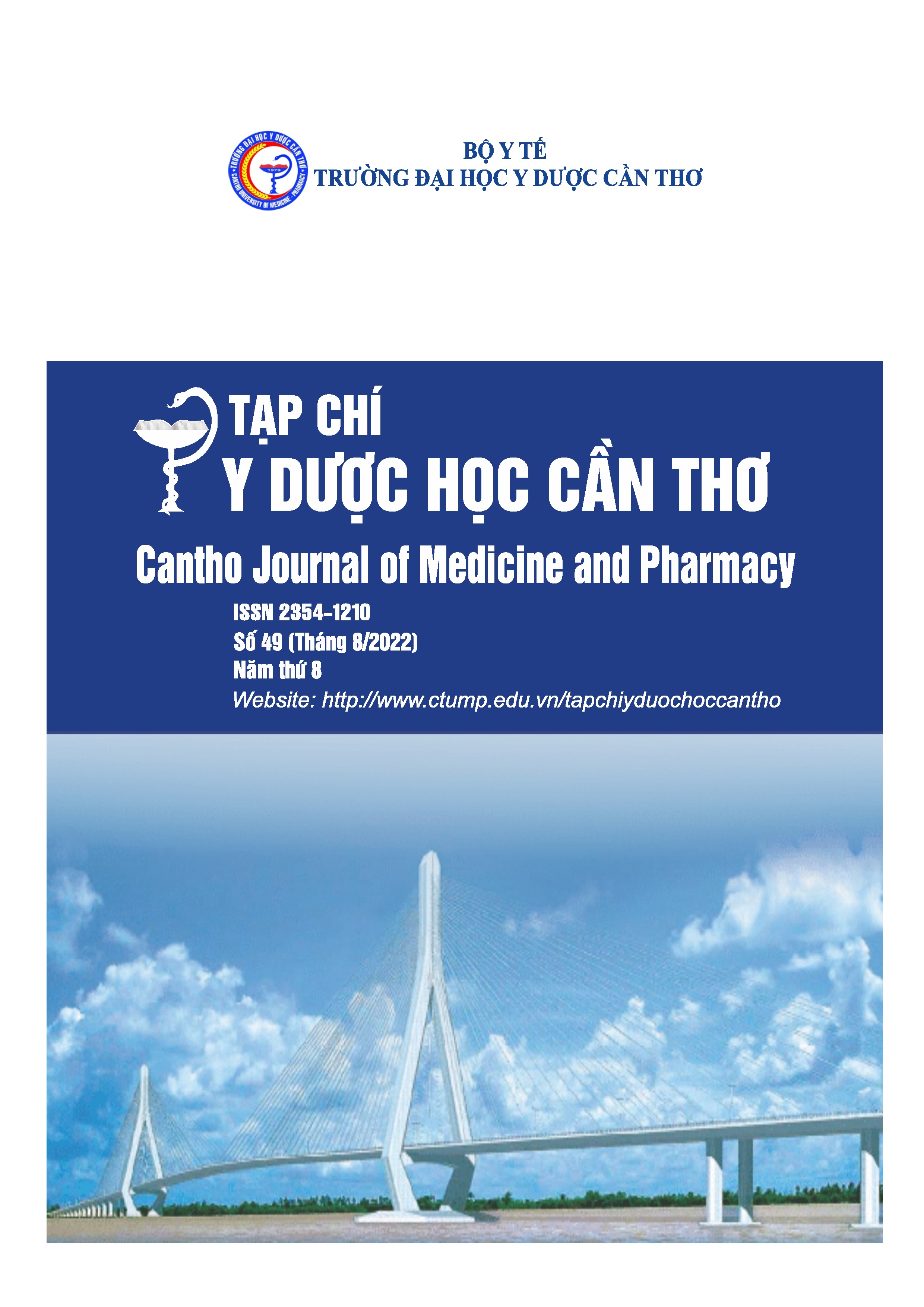RESEARCH OF THE SHORT-TERM PROGNOSTIC VALUE OF GRACE, TIMI AND HEART SCORES IN PATIENTS WITH ACUTE CORONARY SYNDROME AT CAN THO CENTRAL GENERAL HOSPITAL IN 2020-2022
Main Article Content
Abstract
Background: Mortality rate of acute coronary syndrome has been increasing, therefore, the short-term prognosis in admitted patients is essential for clinicians and it’s easy to practice if using prognostic scales, especially GRACE, TIMI and HEART scores. Objectives: Research prognostic value of short-term mortality according to GRACE, TIMI and HEART scores in patients with acute coronary syndrome. Materials and methods: This was a descriptive cross-sectional study that follow up 68 patients with acute coronary syndrome at Can Tho Central General Hospital from 2020 to 2022. Results: The GRACE score was predictive of in-hospital mortality with (AUC=0.805; sensitivity and specificity was 90% and 65.51% respectively) and 6-month mortality with (AUC=0.786; sensitivity and specificity was 100% and 49.06% respectively). The TIMI risk score has poor prognostic value for in-hospital mortality with (AUC=0.682; sensitivity and specificity was 60% and 63.79% respectively) and 6-month mortality with (AUC=0,692; sensitivity and specificity was 60% and 66,03% respectively). the HEART score was also pretty good at prognostic value for in-hospital mortality with (AUC=0.726; sensitivity was 50% and specificity was 89.74%) and better at prognostic value for 6-month mortality (AUC=0.805; sensitivity was 57.1% and specificity was 97.14%). Conclusions: The GRACE score gave the best predictive value of in-hospital mortality and 6-month mortality with AUC values of AUC=0.805 and AUC=0.786, respectively. The difference was not statistically significant when compared with the HEART score.
Article Details
Keywords
Acute coronary syndrome, HEART score
References
2. Ngô Lê Đại, Huỳnh Văn Minh (2017), “Nghiên cứu tiên lượng ở bệnh nhân nhồi máu cơ tim cấp bằng thang điểm Zhang”, Tạp chí Tim Mạch Học Việt Nam, 79, tr.197-204
3. Ngô Tuấn Hiệp (2016), “So sánh giá trị của các thang điểm nguy cơ trong tiên lượng bệnh nhân nhồi máu cơ tim cấp”, Luận án Tiến sĩ Y học. Đại học Y Dược thành phố Hồ Chí Minh.
4. Ngô Tuấn Hiệp, Châu Ngọc Hoa (2012), “So sánh giá trị tiên lượng của thang điểm nguy cơ GRACE và TIMI cho ST chênh trên bệnh nhân nhồi máu cơ tim cấp có ST chênh lên được can thiệp động mạch vành”, Y Học Thực Hành, 804, tr.49-51.
5. Hamley J., McNeil B. (1982), “The Meaning and Use of the Area Under a Receiver Operating Characteristic (ROC)”, Curve , vol.143.
6. Hammami R., Jdidi J., Mroua F. et al. (2018), “Accuracy nf the TIMI and ACE scores in predicting coronary disease in patients with on elevation acute coronary syndrome”, Revista Portuguesa de Cardiologia English Edition, 37(1), pp.41-49.
7. Jakimov T., Mrdović I., Filipovié B. et al. (2017), “Comparison of RISK PCI, GRACE, TIMI risk scores for prediction of major adverse cardiac events in patients with acute coronary syndrome”, Croat Med J, 58(6), pp.406-415.
8. Paul W., Yuling Fu, Wei-Ching Chang et al. (1998), “Acute Coronary Syndromes in the GUSTO-IIb Trial Prognostic Insights and Impact of Recurrent Ischemia”, Circilation, AHA journal, 98, pp.1860-1868.
9. Poldervaart J. M., Langedijk M. (2017),”Comparison of the GRACE, HEART and TIMI score to predict major adverse cardine events in chest pain patients at the emergency department”, International journal of Cardiology, 227, pp.656-661.
10. Sakamoto (2016), “Comparing HEART, TIMI, and GRACE scores for prediction of 30-day major adverse curidiac events in high acuity chest pain patients in the emergency department”, International Journal of Cardiology, 221, pp.759-764.


